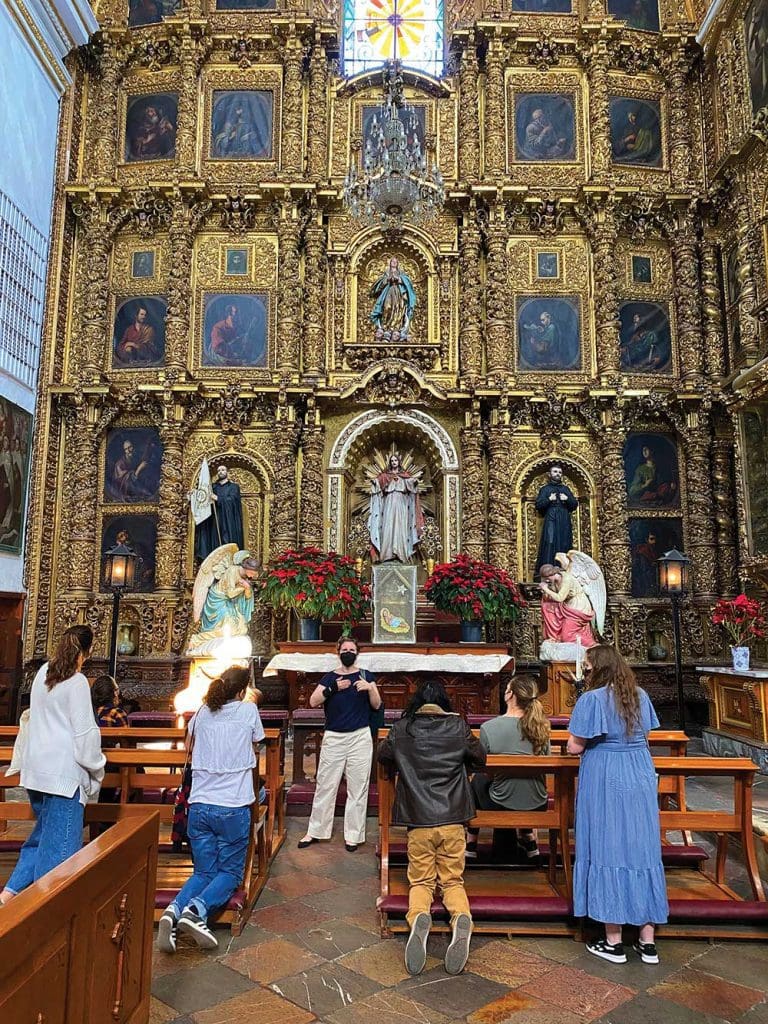When Spain colonized “New Spain”—present-day Mexico —in the 16th century, Indigenous art, architecture, history, and religion were dramatically transformed, students learned in Experiential Research Lab: “Holy” Conquest: Religion and Colonization in 16th-Century Mexico. After spending the fall semester investigating these subjects, class members visited some of the surviving Franciscan convents and Aztec temples during winter Intersession.
Here, Erin Rowe, history professor and vice dean for undergraduate education, discusses the iconographic images in the altar of a Carmelite church.
Each student researched one site during the fall semester and then presented their findings to the others onsite. They agreed that seeing the sites in person offered a completely different experience, Rowe says: “You walk around the space, you look at the objects in detail, you look at them in relationship to each other, and it gives you a much more profound understanding of how the art is working and what it looks like.”





